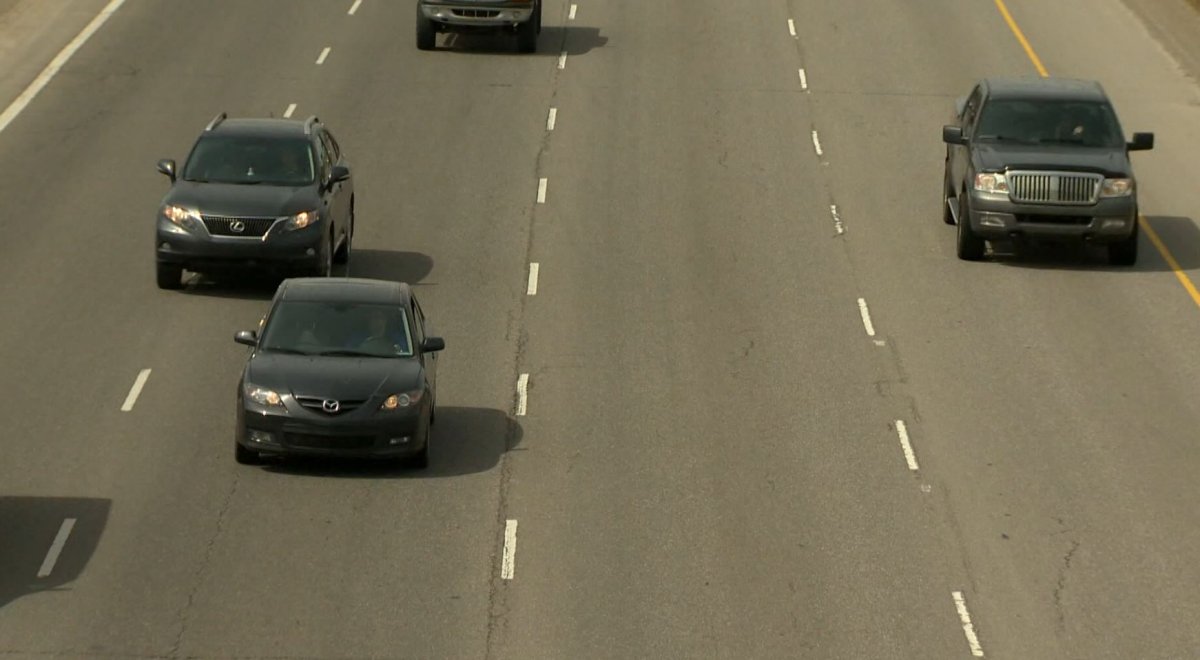The City of Calgary is exploring the future of the city’s transportation network based on current and possible impacts due to the COVID-19 pandemic.

In a presentation to the city’s Standing Policy Committee on Transportation and Transit, city administration laid out three potential scenarios to help guide planning for all aspects of transportation in the city.
“This lets us start to think about what might we need to do differently in our planning and in our service delivery if we start to see some of the variables in the scenarios play out in the real world,” City of Calgary senior transportation engineer Eric MacNaughton said.
The first scenario, titled Rapid Recovery, estimates the pandemic ending in early 2021, with spikes in oil demand and steady population and job growth. It also estimates a 25 per cent drop in downtown commuting.
The second scenario, titled Increased Crisis, estimates a severe second wave of COVID-19 with the pandemic sticking around until the end of 2021. It also includes a depression in the economy with an initial drop in growth, followed by long and slow growth. It also estimates a high rate of people working remotely and a spike in downtown office vacancies.
The third scenario, titled Transformational Change, estimates a multi-year and multi-wave pandemic as work is more globalized, with an emphasis on a diversified green economy. The scenario has growth at a steady but slow pace both in urban and regional areas with a 40 per cent reduction in downtown commuting.
In each of the scenarios, but especially Transformational Change, the use of transit would see a decline as remote work would require less commuting downtown.
“Increased remote work would significantly reduce the demand for transit into the downtown core, impacting transit revenues and potentially the ability to provide other cross-town and community-based services,” the report to committee read.
“It’s not a forecast,” MacNaughton said.
“It’s an ability for us to ask questions like what would we need to do if something different plays out so we’re more prepared and ready for changes that may happen as opposed to to if we hadn’t been looking at this.”

City administration told committee that the future could include variables from each of the three outlined scenarios.
Ward 6 councillor Jeff Davison, who chairs the committee, said the future of transportation in the city would need to be flexible.
“What we’re trying to do is figure out the learnings from those three (scenarios) to make us more successful going forward,” Davison said.
“How do we iterate and be more flexible as a city so that if there is another pandemic 10 years from now?
“We’re able to respond more quickly in a positive way to the situation.”
Latest city mobility trends
An update on how Calgarians are getting around the city was presented to committee on Wednesday.
According to the report, Calgary Transit ridership has reached 52 per cent of pre-pandemic levels, with 116,000 boardings on C-trains and 110,000 boardings on bus routes daily between Oct. 5 and 9.
Ridership has increased in recent months, as transit only reached 25 per cent of its pre-pandemic ridership levels back in September.
Calgary Transit saw ridership plummet by 90 per cent in the first two weeks of COVID-19 lockdown orders.
The latest mobility trends report showed more Calgarians are opting to drive, as vehicle traffic is just five per cent shy of what they were this time last year.

The report noted on-street parking is 76 per cent of the level recorded Sept. 28 to Oct. 2, 2019, up 14 per cent from the spring numbers.
Taxi and rideshare trips remained at 52 per cent of normal levels.
However, e-scooters continued to remain a popular choice for Calgarians, with a total of 936,552 trips between May and October of this year.
Although air passenger travel has decreased 79 per cent at the Calgary International Airport between August 2019 and 2020, the report showed that air cargo landings increased 13 per cent from August of last year.



Comments